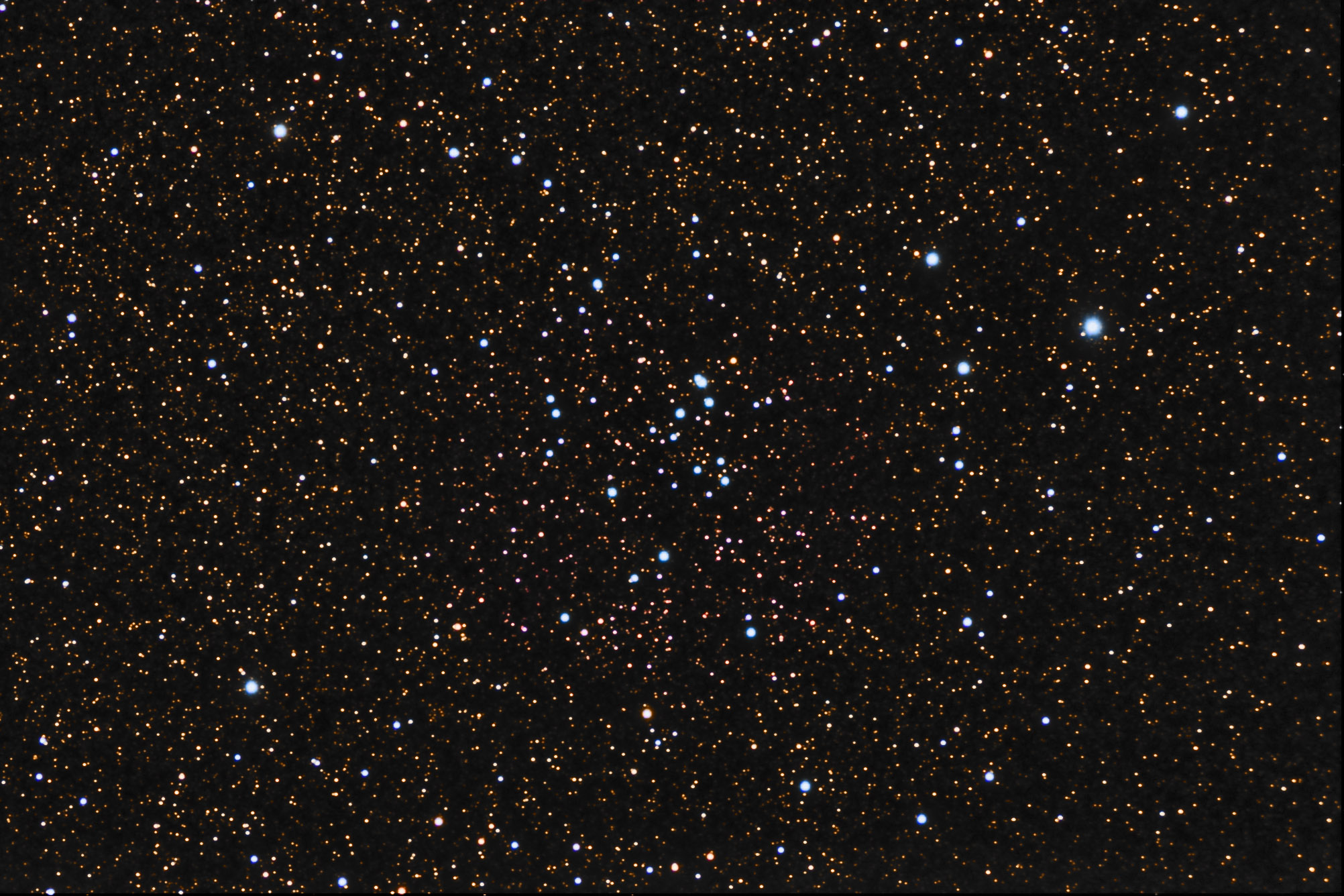| Description | Images |
Object name: NGC6793Designation(s): NGC6793, NGC 6793 is an open cluster in western Vulpecula about 3,600 light-years distant according to WEBDA. It is rather young at 440 million years of age. Still, I'd expect one or two red giants but I don't see any candidates. While the background is quite red and thus apparently well behind the cluster WEBDA lists the cluster's reddening at only 0.17 magnitude which is pretty insignificant. It is listed as Trumpler class IV2p which means it is pretty much lost against the background, has stars of moderately differing brightness levels and is poor in star count. At least in a color image, its blue stars really stand out from the background of fainter red stars so I have a bit of trouble with its status as IV. But visually that may be the case. This cluster was discovered by William Herschel on July 18, 1789 and is in the second Herschel 400 observing program. My visual noted from that were in a spiral notebook that never did get transcribed to a computer database. In the move from Nebraska to Minnesota, that notebook has vanished. Even after 11 years, we have boxes here that have never been opened that are buried in the depths of a storage area behind the stairs. I know I have a visual note on it from the late 80's but it's lost for now and likely forever. |
